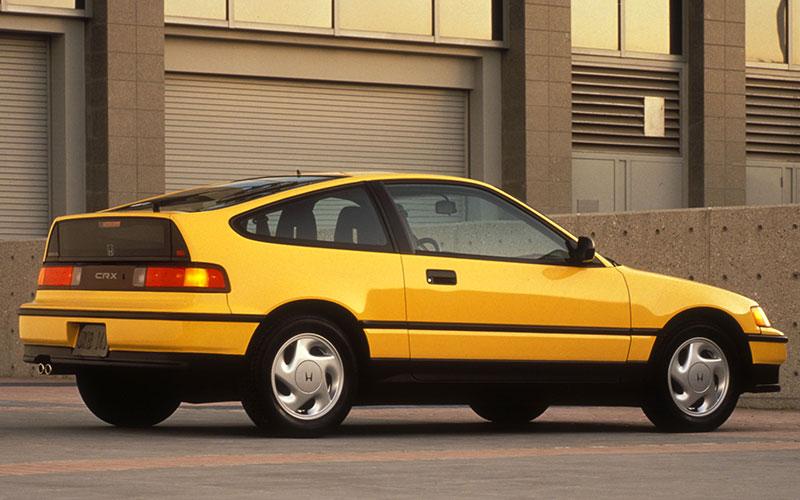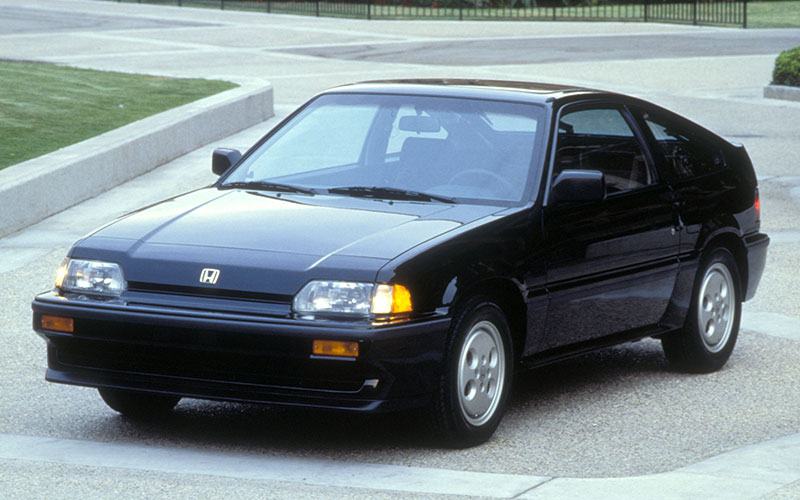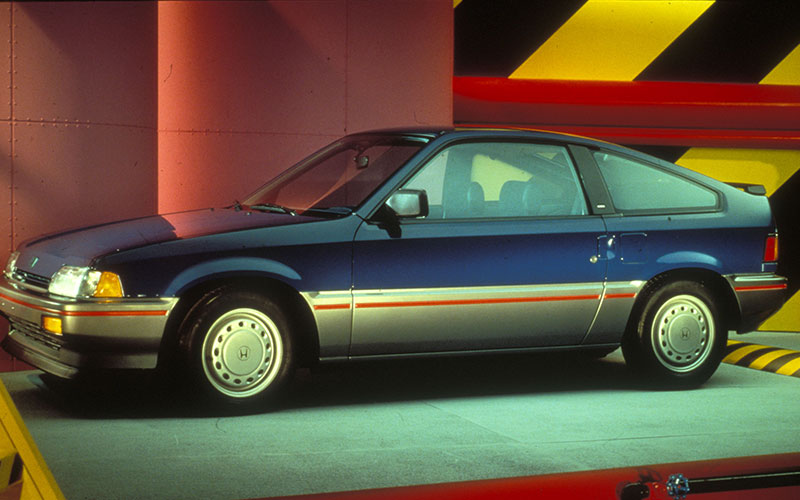Retro Review: Honda CRX
Let’s take a deep dive into the small but spritely hatchback that still influences the tuner community, the Honda CRX.
Another Honda Classic – The CRX
The Honda CRX and its subsequent offspring the del Sol and CR-Z all aimed at democratizing speed and fun without sacrificing practicality. This little Honda was so successful that down to this very day, it’s lauded by the enthusiast community around the world. Combining innovative design language with great engineering resulted in a car that helped Honda gain a larger foothold in America. Let’s take a deep dive into the small but spritely hatchback that still influences the tuner community, the Honda CRX.
Bringing the Honda CRX to America

In 1980, the Ballade Sports CR-X was introduced by Honda in Japan as a city commuter car. Though not initially intended for the North American market, four years later, the Honda Civic CRX goes on sale in the USA. The CR-X name stands for Civic Renaissance Xperimental. The hyphen is only included in non-US models and here in the states, the name is CRX, not CR-X.
The CRX’s innovative shape is largely influenced by the design of the Alfa Romeo Junior Zagato that was released in 1969. The tiny Honda CRX could be had in a trim that weighed as little as 1,800 pounds. Under the hood was two available engines. The base 1.3L I4 motor made just 58 horsepower and a larger 1.5L I4 engine made 76 horsepower. A five-speed manual was standard on both, but a three-speed automatic was also available.

That combination of a light curb weight and a punchy engine allowed the Honda CRX to be both economical and fun to drive. The CRX was faster than a Volkswagen GTI of the same time, but cost less. In 1984, a then unknown tuning company known as Mugen partnered with Honda to create an SCCA GT-4 racing CRX that made 165 horsepower and went on to win multiple championships. In 1985, the CRX Si arrived on the scene with 130 horsepower everywhere but America, where it just made 91 horsepower.
While the first generation of the Honda CRX was a car that enthusiasts enjoyed, it also proved impressive to those seeking efficiency and practicality. In its most fuel-sipping form, the CRX achieved a combined EPA rating of 39 mpg.
The Second Gen Honda CRX

1987 saw the introduction of the second generation of the Honda CRX with new styling, an updated suspension, and more speed. This generation saw the removal of the Civic nomenclature from the CRX. Along with the name separation came three available trim levels, including DX, HF, and Si.
While slightly heavier than the previous car, the new Honda CRX still weighed less than 2,000 pounds in most configurations. A VTEC engine made its way into the JDM CR-X that provided more power without a drop in efficiency and could also opt for a glass roof also referred to as a moonroof, but these features never reached America.

The Honda CRX now used fully independent double-wishbone suspension on all four corners. At the rear of the car, Honda added a transparent vertical section so that drivers could see through that section of bodywork and back up more safely.
In 1990, Honda updated the styling of the front headlights and bumper for VTEC models. America did get a new Si trim level that made 105 horsepower while the rest of the world received a CR-X SiR that made 160 horsepower. In 1992, the CRX was discontinued in its small hatchback form and evolved into a whole new kind of car.
The Targa Top Honda CR-X Del Sol

This new Honda CRX breed lost the hatchback, added a Targa roof, and added a much more sporty design. In America, the CRX nomenclature was dropped in favor of simply calling the car the Civic del Sol. Two trim levels were offered for the new del Sol, S, and Si.
While still based on the Civic, the third generation CR-X del Sol was built to appeal to younger buyers, but proved less engaging than its previous iteration. That drop in outright performance was due in many ways to its higher curb weight. The lightest models of the new del Sol weighed in at 2,300 pounds while heavier examples could crest the 2,600-pound mark.

Most del Sol models required manual removal of the Targa top, but some overseas were also available with a power-operated version called the “Trans-Top”. In 1994, a third trim level simply called VTEC arrived and was the first time a VTEC engine made its way into a CRX platform for America. Its engine, the B16A3, made 160 horsepower and 118 pound-feet of torque. Production of the Honda Civic del Sol ended in 1997 for the US market and in 1998 elsewhere.
The Successor to the Honda CRX: The CR-Z

The CR-Z arrived in 2010 as the rightful heir to the CRX throne as it’s both designed to look and drive like the older car. In fact, it’s also designed to be just as innovative as the Honda CRX through the use of hybrid powertrain technology. A 1.5-liter engine serves as the base platform and incorporates a hybrid-electric motor to produce 121 horsepower and 128 lb-ft of torque.
This hybrid powertrain allowed the CR-Z to achieve 35 mpg in the city and 39 mpg on the highway when equipped with a manual transmission. That six-speed manual transmission was standard, but a CVT automatic was also available.

In 2013, an updated engine was made available with 130 horsepower and 140 lb-ft of torque, but that would be the only major update. Honda discontinued the CR-Z due to low sales in 2016. Hopefully one day we’ll see another Honda compact sports car, but we can always fondly remember these examples they’ve already given us.










